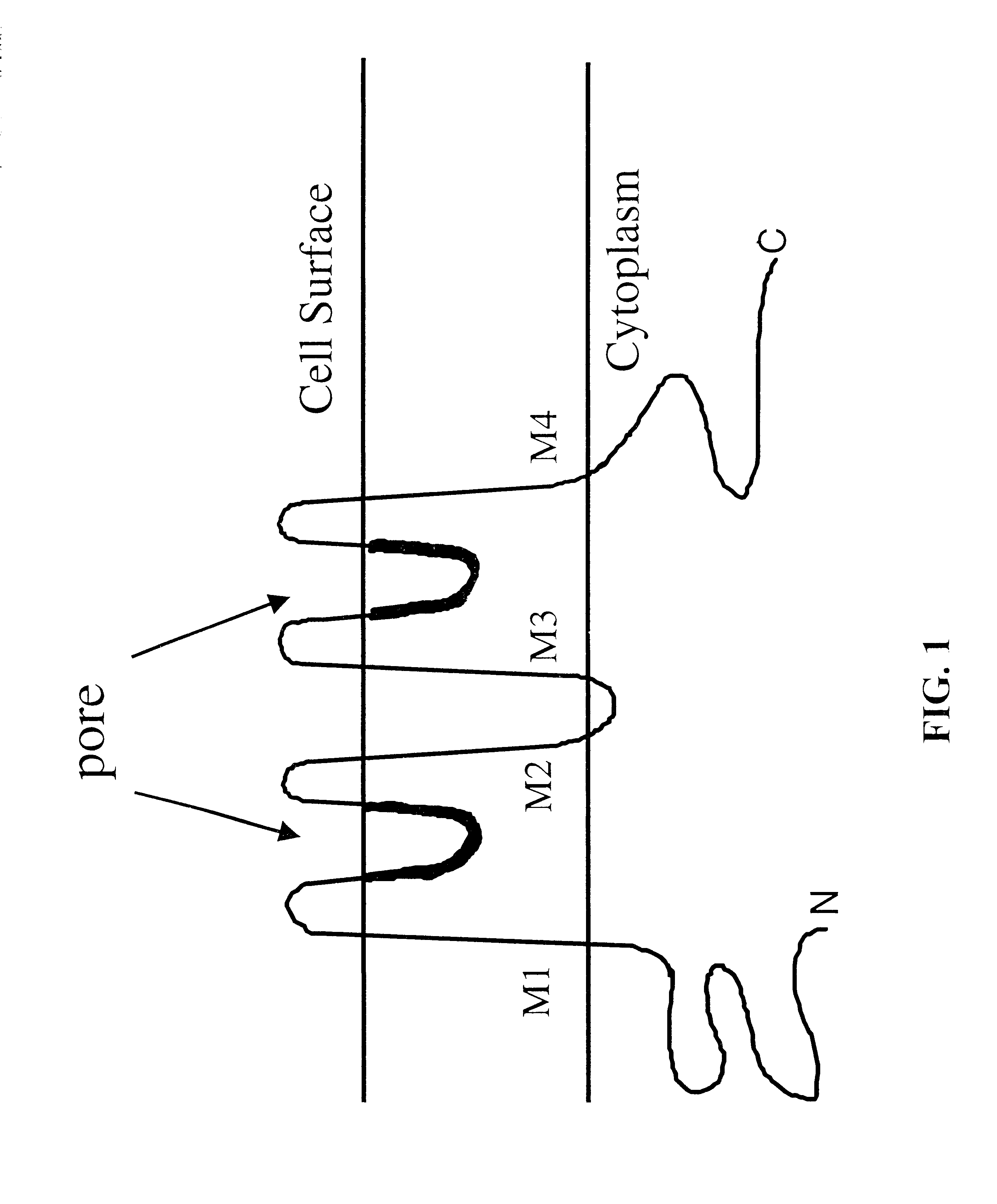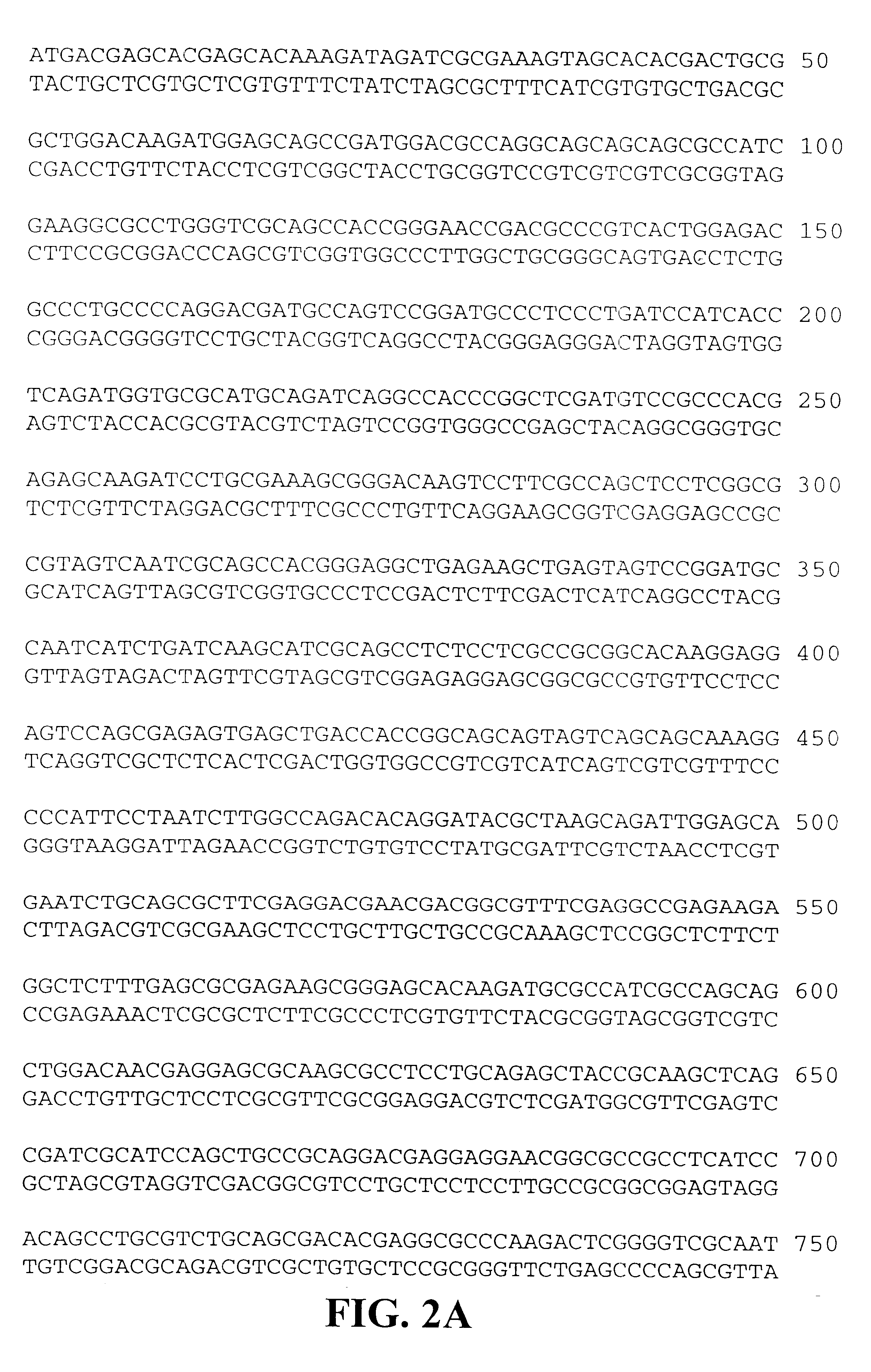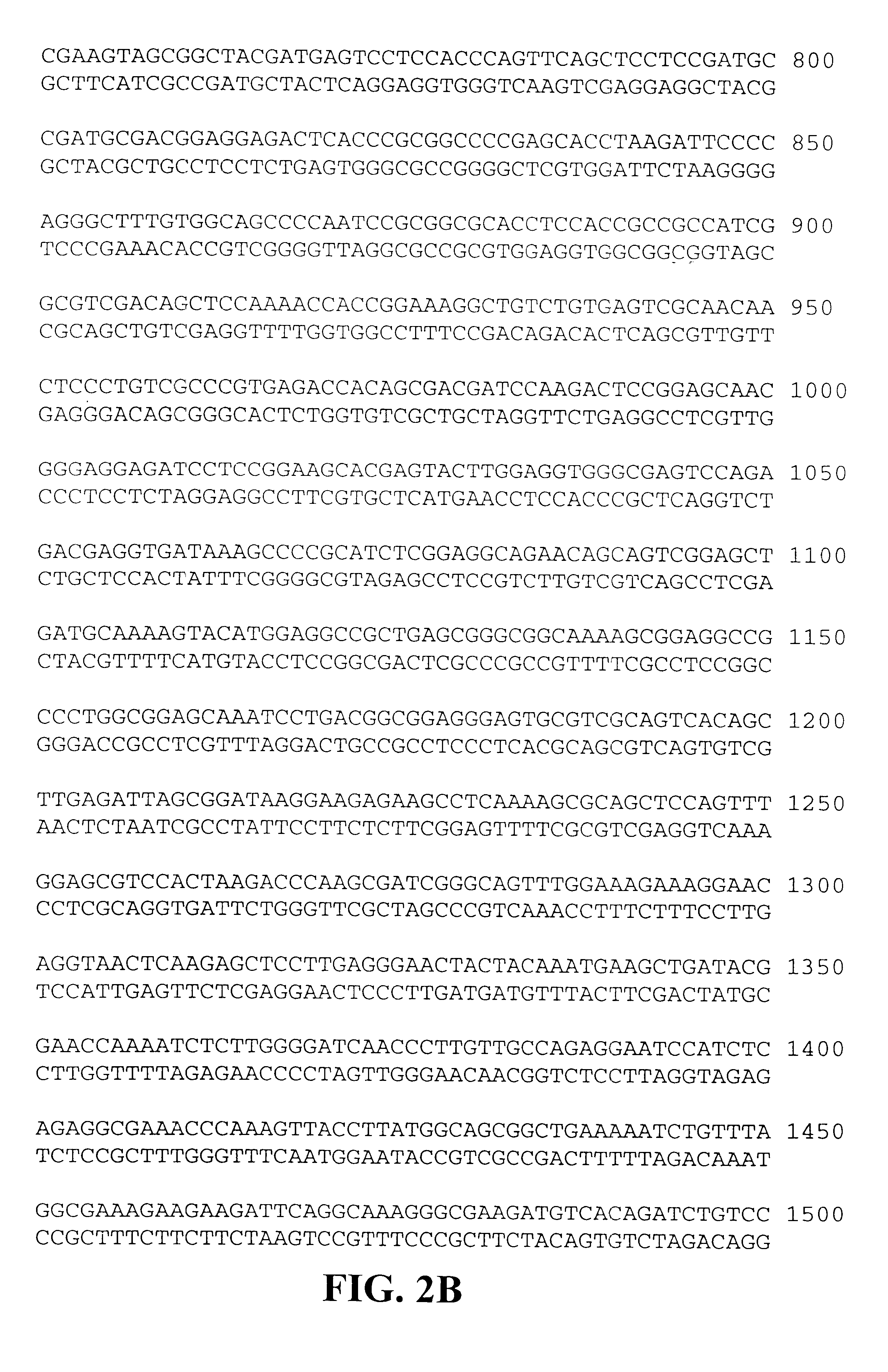Nucleic acids and polypeptides of invertebrate TWIK channels and methods of use
a technology of invertebrate twik channels and nucleic acids, applied in the field of new products, can solve the problems of insufficient use of potassium channels as insecticidal agents, and low efficiency of potassium channels
- Summary
- Abstract
- Description
- Claims
- Application Information
AI Technical Summary
Benefits of technology
Problems solved by technology
Method used
Image
Examples
example 1
6.1. Example 1
Preparation of CDNA Libraries
Drosophila Library
A Drosophila expressed sequence tag (EST) cDNA library was prepared as follows. Tissue from mixed stage embryos (0-20 hour), imaginal disks and adult fly heads were collected and total RNA was prepared. Mitochondrial rRNA was removed from the total RNA by hybridization with biotinylated rRNA specific oligonucleotides and the resulting RNA was selected for polyadenylated mRNA. The resulting material was then used to construct a random primed library. First strand cDNA synthesis was primed using a six nucleotide random primer. The first strand cDNA was then tailed with terminal transferase to add approximately 15 dGTP molecules. The second strand was primed using a primer which contained a Notl site followed by a 13 nucleotide C-tail to hybridize to the G-tailed first strand cDNA. The double stranded cDNA was ligated with BstX1 adaptors and digested with Notl. The cDNA was then sized on an agarose gel and the cDNA greater th...
example 2
6.2. Example 2
Cloning and Analysis of TWIK Nucleic Acid Sequences
The cloning of each of the TWIK nucleic acid sequences is described below. Upon completion of cloning, the sequences were analyzed using the Pfam and Prosite programs. The features of each sequence are outlined in Table 2 below. In addition, each completed sequence was searched using BLAST against the GenBank database to find the most similar DNA and protein sequences. The results of this search are outlined in Table 3.
Unless otherwise noted, the PCR conditions used for cloning each TWIK nucleic acid sequence were as follows: A denaturation step of 94.degree. C., 5 min; followed by 35 cycles of: 94.degree. C. 1 min, 55.degree. C. 1 min 72.degree. C. 1 min; then, a final extension at 72.degree. C. 10 min. All PCR primers encompassed the highly conserved P domains of TWIK nucleic acid sequences to help distinguish them from other potassium channels.
All DNA sequencing reactions were performed using standard protocols for ...
example 3
6.3. Example 3
TWIK Expression Analysis
TWIK expression analysis was carried out by in situ hybridization to Drosophila embryonic and larval tissues for the Drosophila TWIKs, using the cDNAs to generate antisense probes on Drosophila embryos and larval tissue. Antisense DIG-labeled RNA probes were synthesized using the Roche (NJ) Dig RNA Labeling Kit and T7 RNA polymerase according to the in situ hybridization protocol of BDGP methods page (http: / / www.fruitfly.org / methods / ).
The results showed that TWIK2 is expressed in the progenitor and developing muscle cells of the embryo and larval musculature. TWIK3 is expressed in the developing esophagus and hindgut of the embryo. TWIK6 is expressed in a region of the gut, in band of cells around the larval proventriculus. This most likely corresponding to the described imaginal ring that will give rise to adult tissues. TWIK7 is highly expressed in neuronal tissues: during late differentiation of the embryonic central nervous system, throughou...
PUM
 Login to View More
Login to View More Abstract
Description
Claims
Application Information
 Login to View More
Login to View More - R&D
- Intellectual Property
- Life Sciences
- Materials
- Tech Scout
- Unparalleled Data Quality
- Higher Quality Content
- 60% Fewer Hallucinations
Browse by: Latest US Patents, China's latest patents, Technical Efficacy Thesaurus, Application Domain, Technology Topic, Popular Technical Reports.
© 2025 PatSnap. All rights reserved.Legal|Privacy policy|Modern Slavery Act Transparency Statement|Sitemap|About US| Contact US: help@patsnap.com



